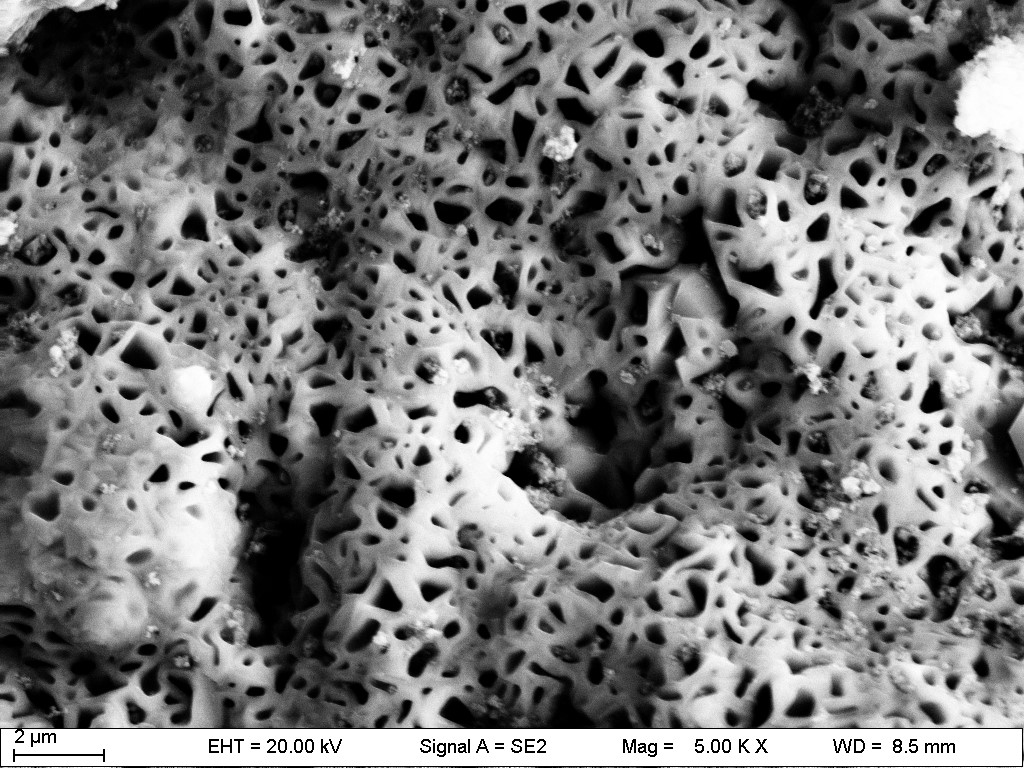Recently, the research team led by JIANG Zhizhong, from Hefei Institutes of Physical Science (HFIPS) of Chinese Academy of Sciences (CAS), found a honeycomb structure in localized regions at the top of the magnetite layer on martensitic steel and analyzed its formation reason and process.
Small nuclear reactors have a good application prospect in marine power, regional power supply, seawater desalination and other fields. The lead-cooled fast reactor with lead-bismuth eutectic alloy (LBE) as the main coolant has unique advantages in miniaturization: compact core, high nuclear heat transfer efficiency and simple auxiliary system. However, homogeneous oxidation corrosion or dissolution corrosion may occur in steel materials, and LBE infiltration and pitting corrosion may also occur in local areas, due to the high solubility of Fe, Cr and Ni in LBE at high temperature. Pitting corrosion is one of the most destructive corrosion forms, which will seriously affect the long-term safe service of small lead-cooled fast reactor.
"We found that the honeycomb structure was composed of many oxygen-poor pores and surrounding net-like branches," said LUO Lin, one of the key staff of the research team, "Low oxygen concentrations promoted the formation of honeycomb structures in a shorter time and more areas."
Moreover, the sizes of the pores and the areas of oxygen-poor regions increased with corrosion time. At 2000 h, the oxygen-poor regions had been extended to the magnetite and spinel layers below the pores, resulting in many oxygen vacancies in the above layers.
"The honeycomb structure may become a nucleation point of pitting corrosion and promote the development of pitting corrosion," LUO concluded.
This study showed the presence of honeycomb structure meant that the low dissolved oxygen concentration in LBE was low, and the design of oxygen control system needed to be optimized.
This work is funded by the National Key R&D Program of China, the Youth Innovation Promotion Association of CAS (Grant No.2021449) and the National Natural Science Foundation of China. The authors would like to thank Institutional Center for Shared Technologies and Facilities of INEST, HFIPS, CAS for the SEM and EDS analysis.

Fig. 1. Honeycomb structures existed in localized regions at the top of the magnetite layer on a martensitic steel after corrosion in LBE. (Image by LUO Lin)

Fig. 2. (a) Cross-sectional morphology of steel exposed to LBE containing 10-7 wt% oxygen for 2000 h. (b)-(f) EDS map scanning results of the area indicated by the blue box in (a). (Image by LUO Lin)














